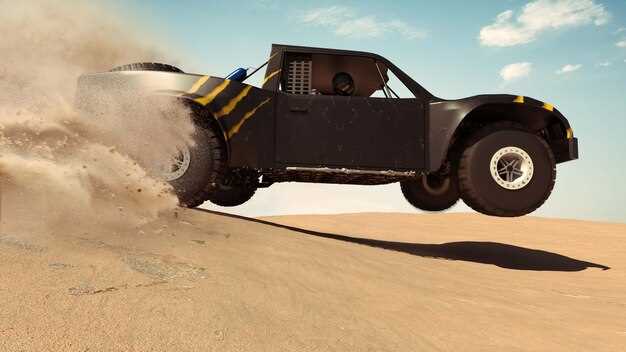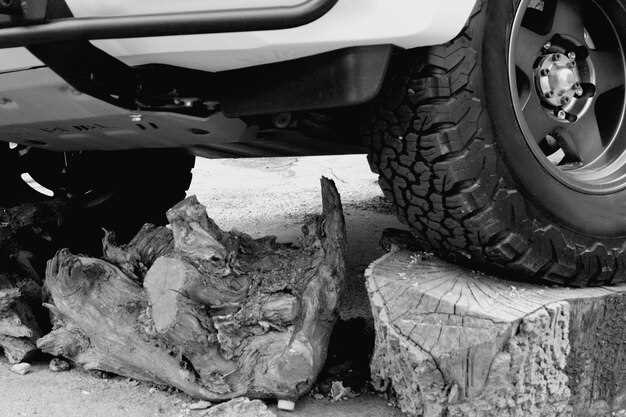
When it comes to navigating challenging off-road environments, having the right lift kit can make all the difference. A quality lift kit not only enhances your vehicle’s ground clearance but also improves its overall performance on rugged terrains. Whether you’re tackling steep hills, rock crawling, or navigating through muddy paths, the right setup can significantly impact your driving experience.
Lift kits come in various types and sizes, catering to different vehicle models and performance needs. Selecting the best lift kit involves assessing your specific driving conditions and preferences. This ensures that you achieve optimal stability, traction, and articulation when faced with aggressive terrains.
In this article, we will explore some of the top lift kits specifically designed for aggressive terrain performance. Each product will be evaluated based on its design, features, and compatibility, helping you make an informed decision to elevate your off-road adventures.
Understanding Lift Height and Its Impact on Clearance
When it comes to off-road performance, lift kits play a crucial role in enhancing a vehicle’s capabilities. Lift height directly influences the ground clearance, which is essential for navigating aggressive terrains. Ground clearance is the distance between the lowest point of a vehicle and the surface of the ground. A higher lift height generally translates to increased clearance, allowing for better maneuverability over rocks, logs, and uneven surfaces.
The choice of lift kit determines not only how high the vehicle will be elevated but also how it handles rough conditions. Kits designed for serious off-roading can raise a vehicle anywhere from 2 inches to over 10 inches, significantly improving the approach and departure angles, vital for off-road navigation.
However, it’s important to consider the trade-offs. While increased lift height boosts clearance, it can also affect the vehicle’s center of gravity. An excessively high lift can lead to stability issues, especially during sharp turns or sudden maneuvers. Therefore, selecting a kit that achieves the desired lift without compromising vehicle dynamics is essential for optimal performance.
Moreover, a proper suspension setup in conjunction with the lift kit can enhance both comfort and control. It’s recommended to also consider tire size, as larger tires paired with a lift kit can further amplify clearance but may require additional modifications to avoid rubbing and ensure safe handling.
In conclusion, understanding lift height and its impact on clearance is vital for anyone looking to tackle aggressive terrains. By choosing the right lift kit, enthusiasts can enhance their vehicle’s off-road capability while maintaining balance and driveability.
Choosing the Right Lift Kit for Off-Road Capabilities

Selecting the appropriate lift kit is crucial for enhancing your vehicle’s off-road capabilities. A lift kit can significantly improve ground clearance, which is essential for traversing rough terrain. Elevating your vehicle not only provides a commanding view of the landscape but also minimizes the risk of damage to the undercarriage.
When choosing a lift kit, consider the amount of lift required based on your intended usage. A moderate lift may suffice for occasional trail rides, while aggressive off-road enthusiasts might opt for a more substantial increase in height. Ensure that the lift provides the right balance of performance and stability.
Additionally, factor in the type of terrain you will encounter. For rocky paths and steep inclines, a lift kit with increased clearance will aid in obstacle navigation. Conversely, for softer or sandy terrains, you might require a different suspension setup that maintains traction and stability.
Don’t overlook the compatibility of the lift kit with other vehicle components. Reinforced shock absorbers and appropriate wheel alignment are critical for maintaining the integrity of your vehicle’s performance, especially after a significant lift.
Finally, consult with experts or fellow off-roaders who have experience with specific lift kits. Their insights can guide you to make an informed decision that aligns with your off-road adventures while maximizing your vehicle’s clearance and handling capabilities.
Installation Considerations for Optimal Terrain Performance

When it comes to enhancing your vehicle’s off-road capabilities, choosing the right lift kit is just the beginning. Proper installation plays a crucial role in achieving optimal performance on aggressive terrain.
Clearance is a fundamental factor affected by the installation process. Ensuring that the lift kit provides adequate clearance not only helps navigate obstacles but also minimizes the risk of damaging undercarriage components. When installing, carefully measure the distance from the ground to critical components to avoid interference during articulation.
Additionally, alignment is essential post-installation. A misaligned suspension can lead to uneven tire wear and hinder the vehicle’s handling on rough surfaces. After lifting your vehicle, it’s advisable to perform a professional alignment to ensure that all angles are set to manufacturer specifications.
Consider the weight distribution of your vehicle as well. Heavier components, such as aftermarket bumpers or winches, can alter the suspension dynamics. Make sure the lift kit you choose is compatible with these additions to maintain optimal performance and stability on rugged trails.
Finally, pay attention to the overall balance of the suspension system. Installing a lift kit can change the center of gravity, which may affect handling characteristics. It’s essential to select a kit designed to work harmoniously with your vehicle’s suspension, including shock absorbers and sway bars, for improved control in challenging conditions.




